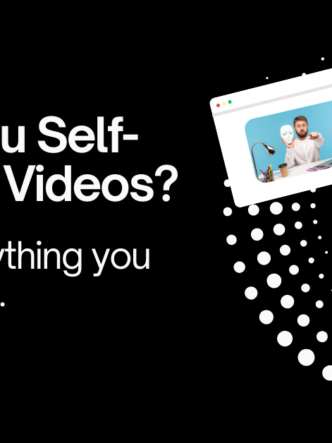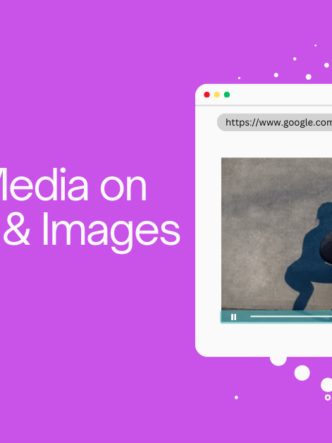Video advertising has grown in prominence over recent years with the trend on the uprise thanks to the popularity of innovations like Snapchat and Instagram stories. Before you get to the point where you need to serve an ad, though, you’ll probably need to figure out how the ad is going to be served.
There are a lot of ways video ads can be presented to a potential viewer. Depending on your requirements and the platform you prefer to serve your content on, there are quite many ways available to streamline your video monetization efforts.
A Brief Introduction to VAST
Before diving into the comprehensive world of online video advertising, it would do you some good to understand the concept of the Video Ad Serving Template (VAST). VAST is an online ad specification that was put in place by the Interactive Advertising Bureau to improve advertising experience.
Without getting into the technical details, all reputable video ad providers serve videos according to the standards set in place by the bureau. In turn, vast ads are guaranteed faster delivery and better compatibility with nearly every kind of video player out there. Additionally, a high percentage of modern video players are vast-compliant (can understand the data passed by different servers) and can thus play vast ads.
What are the Different Video Ad Formats Available?
-
In-stream ads
In-stream video ads, as the name suggests, are video advertisements that are played within the video player. These will typically appear before, during or after the video has been played (referred to as pre-roll, mid-roll, and post-roll) respectively. In-stream video ads are the kind of advertisement that is most common on large sites like YouTube and will typically be 15-30 seconds long. Each of these has their weaknesses and strength.
Pre-roll and mid-roll ads are often viewed as intrusive as they often delay or interrupt the displaying of the content to be viewed. Post-roll ads are the least intrusive since they appear after the video has finished playing. However, since the visitor will already have seen the content they wanted to view, the latter of these have the lowest completion rates, and consequently, the lowest CPM. Pre-roll ads are the exact opposite of post-rolls and are widely favored for their high retention rates and much higher CPMs than mid and post-roll ads. However, mid-roll ads offer the best completion rates since, most times, the user is already engaged and can watch the whole commercial so that they can go on with the rest of the show.
On the revenue front, in-stream ads are still the most popular type of video ad because they offer the best performance of all the different types of ads since the user initiates them. Twitter entered this market for this reason and has made steady progress.
-
Overlay Video Ads
Overlay video ads are a kind of advertisement that is meant to run on top of the content, such that both the video and the ad play at the same time. The overlay is usually interactive and clicking on it pauses the material and a full video player is opened, or a link to the advertiser’s site is triggered.
The behavior of the ad depends on the provider, however: some collapse into a much smaller portion of the screen; others have a close button; while others have a countdown timer with the close button revealed once the content finishes playing. These are often referred to as interstitial ads. They generally run for 5-15 seconds before changing to a static ad or changing into a smaller ad.
Interstitial ads have found a lot of use mostly on mobile ads since they are less likely to be skipped. However, when used in excess, they tend to get annoying. So much so that as of early 2018, Google started actively demoting websites that overused them (such ads are, as of the latest version of Chrome, blocked by default.)
Whereas a great way for video monetization when used in moderation, they can land you on the wrong side of advertisers (and a terrible brand reputation) if misused. Additionally, if your video contains captions, a reduced version of your ad could inadvertently block them out or other information in the video.
-
In-banner video ads
In-banner video ads are usually embedded inside standard banner ads, generally at a fixed position at the bottom of a webpage. These videos don’t need a video host and start playing automatically on mute. Once the user interacts with it, it will either fill the screen or redirect the user to the desired landing page. A variety of the same includes ads that start out broad and shrinks down as the user scrolls down the page.
This has the advantage of having user-initiated interactions and thus doesn’t bother the user by blocking off important content. Additionally, no video player has to configure to use it, and it doesn’t take up a lot of space.
However, in-banner ads have very low viewability rates as compared to in-stream ads since they are not so good at capturing the user’s attention. In the case of a banner that shrinks upon interaction (or vice-versa,) the movements can be quite distracting, aside from the fact that viewers may not know how to interact with the ad.
-
In-Game Video Ads
In a game, video ads can take many forms. One of them is the usual interstitial ad format which is played whenever a game is paused or after a level is completed. Often, various incentives are also presented to the user in return for in-game currencies and prizes, for instance. They are a very efficient way of monetizing an app.
The great thing about this ad experience is that the user can sanction it. For example, when offered an incentive, the user is very likely to watch the game to completion since they are both non-skippable and short enough to reduce chances of abandonment, to begin with. They don’t interrupt the gaming experience, and, if relevant, can have a profound effect on the user.
On the other hand, if used repetitively, for instance, due to poor implementation on the developer’s part, they can be very off-putting. When not manually activated by the user, they are also prone to abandonment before they complete.
-
Connected TV Video Ads
With the promotion of more internet-connected devices around the world, another home device that’s taking the advertising world by storm is the connected TV. Ads presented in this category of advertisement can either play while a certain app is loading (since they have a substantially lower memory than computers) or in-app. The latter type of ads adopts the traditional stance advertisements in that they can be pre, mid or post-roll.
Depending on the type of TV, however, the ads may be displayed in the app store and be expanded to full-screen upon interaction; others show information about the program being watched while posting an ad on the side. Some manufacturers also allow even more types of ads, like interstitial and interactive ads to be displayed.
Connected TV ads don’t offer the best user experience as compared to other online ads. It’s understood, however, that advertisers intend to replace ineffective mid-roll ads (that interrupt user viewership) with those that can be displayed natively by connected televisions. Major outlets like FOX already implement the same during NASCAR races.
On the plus side, they bring native experience to connected televisions. This often leads to better brand engagement than other types of advertisements. However, connected TVs haven’t taken the market by storm just yet, so until the adoption is improved in this regard, such video ads may not reach the widest audience.
-
Sponsorship Graphics
Sponsorship graphics are a type of video ad that is persistent and appear just around or near the video player. Normally, they are interactive and are featured such that they are prominent enough to attract the user’s attention without distracting them from the content.
Normally, they consist of a short, looping video (in GIF format) and don’t need a host to be displayed. As they do not feature any sound, text tends to be a more prominent part of their content and they play concurrently with the video content.
Their persistence is their greatest strength, giving them a chance to make a large impression on the user (since they don’t need to be skipped, anyway.) They offer a great way of getting a message delivered without interfering with or distracting the viewer. However, the same persistence can lead to disappointing results. If your video is too flashy, it may end up distracting the viewer from the main video.
Recall, the user is more likely to click on the content if they watch the video for longer, so making them lose attention isn’t in your best interest. Additionally, they can be avoided quickly if the viewer decides to watch the video content in full-screen mode.

















